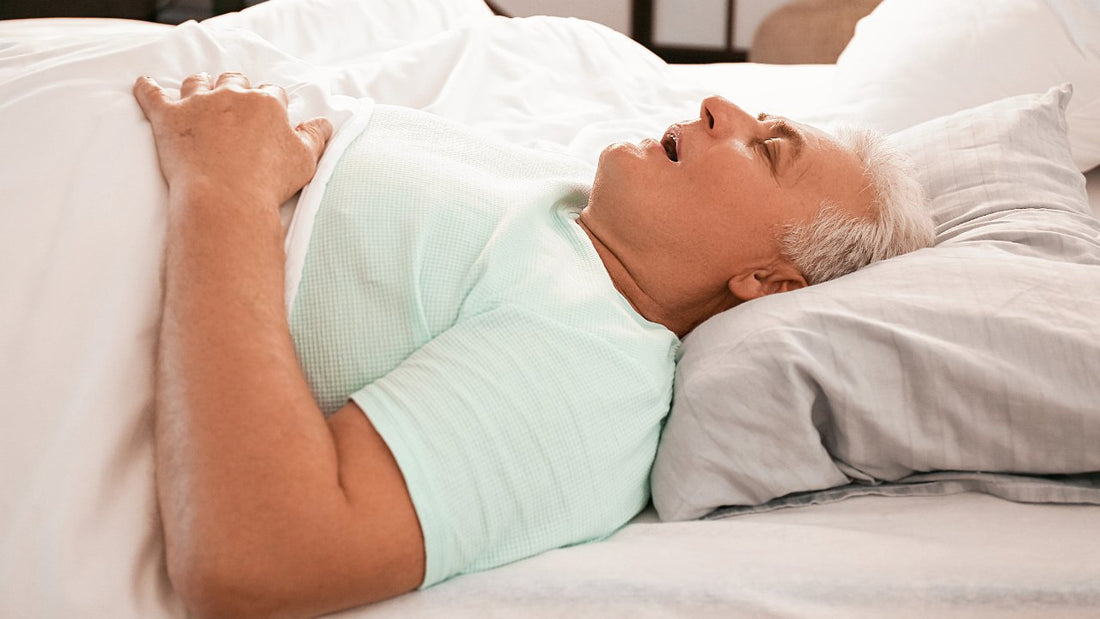
Oxygen Desaturation During Sleep: What You Need to Know
Oxygen desaturation, or the drop in oxygen levels in your blood, is a critical aspect of the pathophysiology (the underlying mechanisms and processes that lead to the condition) of obstructive sleep apnea. Understanding how oxygen desaturation impacts sleep quality and overall health is essential for both patients and healthcare providers. This blog explores the nuances of oxygen desaturation during sleep, its causes, effects, and how it is measured and managed during sleep.
Understanding Oxygen Desaturation
Oxygen desaturation refers to a significant drop in the blood's oxygen levels. This phenomenon is common in sleep disorders, particularly in conditions like obstructive sleep apnea (OSA), where the upper airway collapses or becomes blocked, leading to intermittent pauses in breathing. These pauses cause a decrease in blood oxygen, known as oxygen desaturation. This can lead to a high Hypoxic burden. Hypoxic burden refers to the total amount of time your body spends with low oxygen levels during sleep, which is common in people with obstructive sleep apnea. These frequent drops in oxygen can stress the body, leading to inflammation, increased heart rate, and other issues that strain the cardiovascular system. Over time, a higher hypoxic burden can raise the risk of heart problems like high blood pressure, heart disease, and irregular heartbeats.
What Causes Oxygen Desaturation During Sleep?
During sleep, particularly in individuals with apnea or other respiratory disorders, the body’s oxygen levels can drop significantly. This desaturation during sleep is often caused by the repeated cessation of breathing that occurs in sleep apnea. When the airway is obstructed, the oxygen supply to the bloodstream is interrupted, causing oxygen levels to fall—sometimes to dangerously low levels.
In severe cases, oxygen desaturation can be profound, leading to an oxygen level of 80% while sleeping. This is concerning because a healthy oxygen saturation level (SpO2) typically ranges between 95% and 100%.
The Apnea-Hypopnea Index (AHI)
One of the key metrics used to evaluate sleep apnea is the Apnea-Hypopnea Index (AHI). This index measures the number of apnea (complete stoppage of breathing) and hypopnea (partial reduction in breathing) episodes per hour of sleep. AHI is crucial for diagnosing and assessing the severity of sleep apnea and other sleep-related breathing disorders, as it provides insights into the frequency of breathing interruptions and associated oxygen desaturation during sleep.
The correlation between AHI and sleep apnea is well-established. A higher AHI indicates more frequent interruptions in breathing, which often result in significant drops in oxygen levels (oxygen desaturation) throughout the night, suggesting more severe sleep apnea. These frequent drops in oxygen can strain the heart and other organs, potentially leading to long-term health consequences.
Interpreting the Apnea-Hypopnea Index Score
Understanding your AHI score is essential for assessing the severity of sleep apnea. A normal AHI is typically less than 5 events per hour. An AHI of 5-15 indicates mild sleep apnea, 15-30 suggests moderate sleep apnea, and a score above 30 signifies severe sleep apnea.
Severe disruptions in breathing and associated oxygen desaturation during sleep can lead to significant health risks, including increased strain on the heart, higher blood pressure, and a greater likelihood of cardiovascular issues. Monitoring the AHI is therefore a critical part of managing sleep health.
The Role of Heart Rate in Oxygen Desaturation
During episodes of oxygen desaturation, the body’s heart rate often increases as a compensatory mechanism to maintain adequate oxygen supply to vital organs. This response is a natural attempt to counteract the effects of low oxygen levels, but it can place additional stress on the cardiovascular system.
Managing Oxygen Desaturation During Sleep
Effective management of oxygen desaturation is a critical component of sleep health, especially for individuals with sleep apnea. Continuous Positive Airway Pressure (CPAP) therapy is one of the most common treatments for sleep apnea. CPAP machines deliver a steady stream of air through a mask, keeping the airway open and preventing the drops in oxygen saturation associated with apnea.
In cases where severe oxygen desaturation is detected, supplemental oxygen may be prescribed during sleep. This helps maintain oxygen levels within a safe range and reduces the risk of complications associated with prolonged desaturation.
Conclusion
Oxygen desaturation during sleep is a serious issue that can have significant health implications, particularly for individuals with sleep apnea. Monitoring and understanding your Apnea-Hypopnea Index and other related metrics is crucial in managing these conditions effectively.
If you or someone you know experiences symptoms like oxygen levels dropping to 80% while sleeping, it’s important to seek medical advice. Early detection and treatment of oxygen desaturation can improve sleep quality, reduce the risk of complications, and enhance overall health and well-being.
